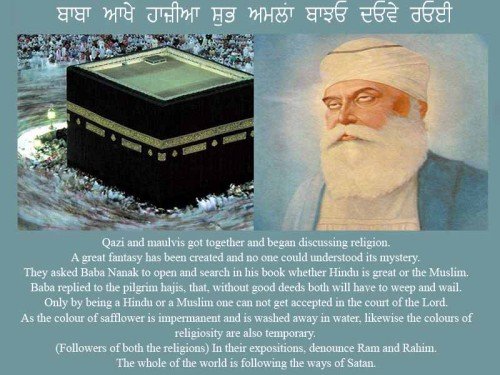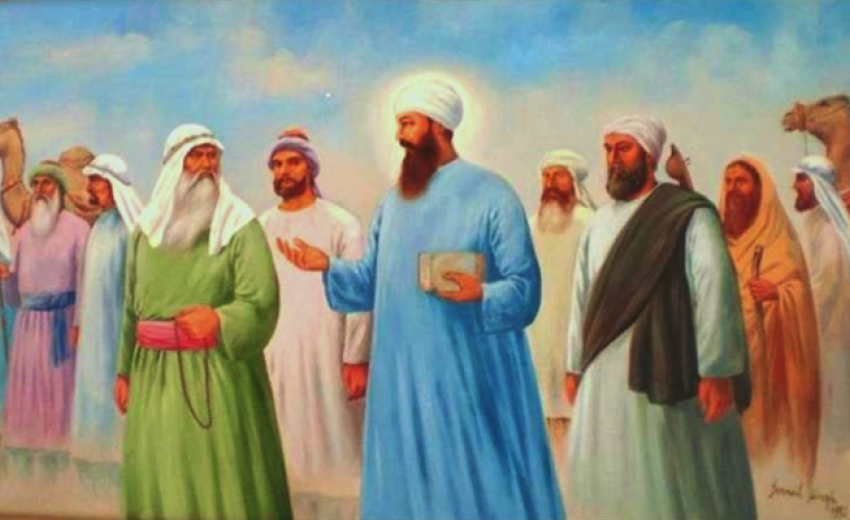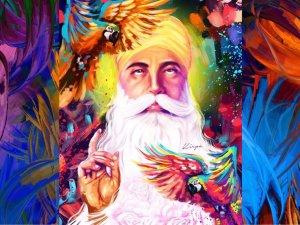WHAT IS RELIGIOSITY?
To distinguish the Religion from the Religiosity may mean many things but I am using the term religiosity here for the practices that, with time, creep up as being superficially religious. Usually, they are inappropriate superstitions that give birth to a variety of religious rituals. They may be dated customs or practices, and evolving traditions that, over time, wrongfully crop up in every religion.
Consequently, over the years, the faithful begin to substitute their religiosities falsely to their religion. In other words, over a generation or two, these religiosities start to take the form of worships as well as to serve as false surrogates for a true religion.
PEW RESEARCH ON WORLD RELIGIONS
A recent report released by the Pew Research Center showed a definite decline in people surveyed who described themselves as religiously affiliated. Pew researchers attributed these drops to the dying off older believers, and a growing number of millennial — those born between 1981 and 1996. Those millennial claimed no religious affiliation in the surveys.
Another study by the Pew Research Center, released in 2015, showed that millennials had been leaving Catholic and mainline Protestant churches in droves since at least 2007. But, they did not necessarily lose their belief in God. In fact, more than half said they were still religious or spiritual.
The researchers also found that as religiosity in America faded, a more general spirituality went on the rise, with 6 in 10 adults saying they regularly felt a “deep sense of spiritual peace and well-being,” Also increasing was the number of people who experience a “deep sense of wonder” about the universe.
These trends, though alarming, make sense, said Andrew Walsh, a historian of American religion, in, that religious affiliation in America today is “increasingly shaped by individual choice and less by inheritance from a family or community.” In the millennials’ custom, the offspring customarily adapted the traditional religion of their family, often with no question asked. That is indeed changing, and such change will keep on gathering momentum with the growth of science and technology.
IN CONTRARY: SOME RELIGIONS ARE EXPLODING
The point of today’s essay is about what it was that Guru Nanak did right so that he began to gather new religious followers. Further, the followers of his path ever kept growing in numbers. It is a fact that, whereas organized religions of the world began to decline, Guru Nanak’s way of life has been on the upsurge. Let me explain.
At the time of his death in 1539, Nanak left behind his followers numbering in thousands, but still only in thousands. However, in the two centuries that followed, the number of Nanak’s followers kept mounting to reach 25% of the Indian subcontinent that expanded from Afghanistan to Myanmar, and Ceylon to China. Such is evident from the reports published at the times of Guru Gobind Singh (1667 – 1708) or soon after.
Today, the followers of Guru Nanak’s teachings are swelling in numbers to over three hundred fifty million according to some estimates. I will dwell on the specifics of those estimates on another occasion, but they are pleasantly heartening for people troubled with the declining future of religion.
In arriving at the growing numbers, I am counting all those admirers who value Guru Nanak’s religion that he summarized very wisely in his three doctrinal expressions. According to written records engraved in the verses of the Guru Granth, and those of other authorities on the Sikh theology like Bhai Gurdas and Bhai Nand Lal, Guru Nanak’s doctrinal expressions were:
1. “NAAM” meaning “Mindful Awareness of Divine Presence.”
2. “DAAN” meaning “Cultures of Altruism.”
3. “ISHNAAN” meaning, “Ethics of Good Deeds.”
The answer to the concerns created by the PEW reports may lie in Guru Nanak’s visions on “religion.” Let me cite an unusual and often quoted response of Guru Nanak to every question on his religion. People he met asked such questions of him frequently.
NANAK STATED SO AFTER A PROLONGED MEDITATIVE INTROSPECTION
Guru Nanak confronted religious leaders of the time just after a few days of intense meditation and introspection in the jungle around sacred Vein River in India. The religious leaders heard Nanak pronounce publically as, ‘na-ko-Hindu’ ‘na-ko Musalman.’ Nanak said that he would not profile people as Hindus or Muslims, or by affiliation to any other religion. He was asking people not to look at a person with spectacles of Hindu or Muslim religiosity; rituals they practiced or traditions they had accumulated over centuries.
Since that most cited instance, Guru Nanak continued this theme throughout his life.
DIALOGUE AT MAKKAH
During Guru Nanak’s pilgrimage to Islamic holy place, Makkah in Saudi Arabia, the following deliberation took place.

A Saudi author named Taajudin Naqshabandhi documented this dialogue. Taajudin accompanied Guru Nanak for roughly two years during the Guru’s travels through the Middle East around 1510 AD. He titled his manuscript as, Sihayato Baba Nanak Shah Fakir.
According to Taajudin, a prominent Mullah of Makkah at the time, Qazi Rukn–ud-Din posed a question to Nanak.
The question was obvious but with profound implication to the religious world.
“Fala Allah mazabo”? (What is your religion?), asked Qazi Rukn–ud-Din.
Guru Nanak replied, “Abdulla Allah la mazaboo” (I am a person of God without belonging to any religion).
That was the profound answer, but it was not new to Nanak’s teaching. There are many examples. Let me illustrate a few more examples.
ACCOUNT OF MUSLIM BELIEVERS FROM INDIA
A prominent Muslim, Ubare Khan of village Jorian near Dera Baba Nanak, had heard of Guru Nanak and his influence in the area. To observe for himself, Mr. Khan came to visit Guru Nanak at the bank of river Raavi that separates Pakistan from India. There, he asked the similar question to Guru Nanak, whether Nanak was Hindu or Muslim.
The Guru replied, “That the question was irrelevant since only God is eternal, and neither Hindus nor Muslims is.” What it meant was that the love of Divine in the creation and the living according to that belief was essential and not any label that indicated membership to any organized religion.
Ubare Khan was pleased with this answer. He fell at the Guru’s feet and sought his blessing. The Guru said ‘God will bless him.”
Similar is the story of another prominent Muslim, Abdul Rehman who met the Guru and asked him what his religion was whether he was a Hindu or a Muslim. The Guru replied that the Name Divine was his religion. At this, Abdul Rehman further inquired if the beloved of God needed any religion.
The Guru again replied that the lovers of God loved God. They did not permit themselves to entangle in the controversies of religion or those of Hindu and Muslim scriptures. The entire creation of God was essentially the same. Both wealthy and poor, the good and the bad were the Creator’s making. The same Divine Light was resplendent in all. We failed to see this Light because of our narcissism, the Guru continued.
Hearing this, Abdul Rehman fell at the Guru’s feet.
WHEN GURU NANAK LEFT FOR HEAVENLY ABODE
Guru Nanak lived last 18 years of his life in the town of Kartarpur that lies in Pakistan at its border with India. There he established institutions of learning side by side with the living examples of serving the community with what later became a Sikhi value.
There is a record of hordes of people coming to Kartarpur to seek out Nanak, and to have dialogues with him on his new wisdom. They were scholars, saints, and everyday folks from all over South Asia. They spent time with the Guru and his congregations at Kartarpur.
However, when the time of his death came near, no one knew as to the followers of which religion should claim the Guru’s remains for Nanak’s funeral rites.
The writer, Harbans Lal, with Sikh journalist Parminder Singh Soch and late Dr. Kuldip Singh Hanjan,
at Guru Nanak mausoleum at Kartarpur Sahib.
Today, the Hindu cremation ground and the Muslim’s burial place, both claiming the Guru’s last rites, exist side by side in the town of Kartarpur.
Thus, from his birth to his death, all religions of the time claimed Guru Nanak as their own.
CONCLUSION
There could not be any more powerful illustration of the universality of the Guru Nanak’s teachings than those touched upon in the above discussion. When we articulate them as “Mindful Awareness of Divine Presence, Culture of Altruism, and Ethics of Good Deeds”, nothing would seem more relevant to the future world. For day-to-day applications, these teachings are further implicit in the 1430 pages of Sri Guru Granth Sahib in the form of Gurbani meaning verses of Guru’s wisdom. Our scholars, our educationists, and our clergy need to develop exegeses of these verses. Then, there is no doubt in my mind that the future generations of the world would find it striking.
The additional appeal to the new age generations would be Nanak’s vehement opposition to any religiosity that is driving people apart and away from the organized religions of today. However, when some of the old organized religions may be losing ground per PEW data, others that are more spiritual and universal may be gaining ground in the future civilizations.





